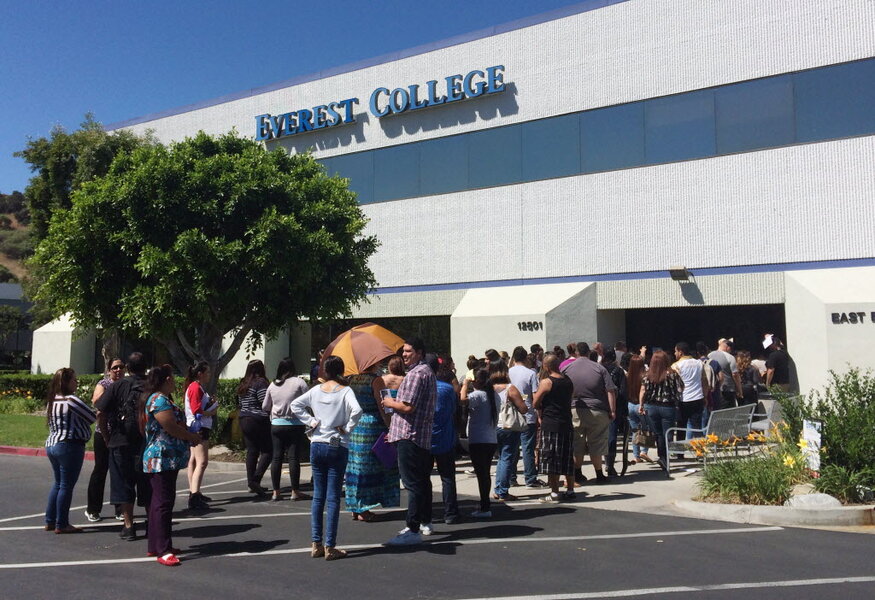Relieving the fears of the college-bound
Loading...
A Consumer Reports poll of Americans with student loans offers a critical insight into the current state of higher education: More than a quarter of those with college degrees said their education was not worth the cost.
Their postsecondary schools, in other words, did not prepare them for the kind of gainful employment to pay off their debts easily.
About 41 million Americans collectively owe more than $1.2 trillion in federal student loans – the biggest such burden of any country. While the presidential campaign has focused on how to address this sizable personal debt, the better focus should be on the quality of higher education – whether it be public, nonprofit, or for-profit institutions.
Can the education industry relieve the fears of high school students and their parents about the big disconnect between campus learning and the workplace?
For sure, colleges keep trying to make academic work more relevant to the job market while also striving to impart truly “higher” education. Yet many political candidates demand more reforms. On Tuesday, for example, Hillary Clinton proposed that $10 billion in federal money go for “alternative” education, such as online courses in computer coding, to ensure job-ready skills for innovation and entrepreneurship.
Congress has not made it easy for the US Department of Education (DOEd) to hold colleges and universities accountable for their use of federal dollars. The easy focus has been on for-profit schools, many of which overpromise on job prospects. Under new DOEd rules, such schools must ensure gainful employment of their graduates to order to help them pay off student loans.
Why not make similar requirements of state and nonprofit colleges that rely on federal money? Many factors determine whether a college grad has a successful career, such as upbringing or motivation. But perhaps with so many grads regretting college, it may be time to look hard at the institutions' responsibility.
“The unfortunate reality is that not all institutions have students’ best interests at heart or are investing their resources in ways that maximize student success,”says DOEd Under Secretary Ted Mitchell
In a recent speech, Sarah Bloom Raskin, deputy secretary of the Treasury, said, “The promise of a college or university is a quality education, a good-paying job, and the chance to get ahead. But instead, borrowers at these schools have lower graduation rates, higher unemployment rates, and earn less than the overall population of student loan borrowers.”
The government’s new “college scorecard” that rates schools of higher learning found that for about a fifth of schools, fewer than half of federal student loan borrowers are able to pay down a dollar of principal over the first five years in repayment.
To relieve the fears of the college-bound and to reduce inequality in education, Congress must focus as much on reform of higher education as on the student debt to pay for it.





